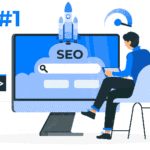All websites aim to convert visitors in some way. Some businesses generate conversions by selling products on their website. Other people use the term differently, such as signing up for an email newsletter or calling a specific number.

What is Website Conversion?
Conversions are one of the biggest stumbling blocks for business owners who aren’t familiar with Internet marketing. It’s completely understandable that the definition varies by industry and business.
An action that moves a site visitor closer to becoming a customer is a conversion. A simple purchase may be all it takes for an e-commerce site. Typically, this means filling out a contact form with project details on a contracting company’s website.
Site elements that encourage visitors to take these actions are arguably the most important parts since ultimately, they are what generate leads and revenue. It may be fun to look at stunning graphics, smooth navigation, and fancy flash designs, but they don’t produce the same results as contact forms and “buy now” buttons.
Planning for conversion
Prior to designing (or redesigning) your website, you should consider two basic aspects:
Why should visitors visit your site?
In most cases, there will be more than one answer to this question. In the case of a dentist’s office that offers online appointment bookings, patients may have the option of scheduling their appointments online or by calling the office directly. There are actually two conversions to consider in this case.
What method will be used to measure conversions?
Internet marketing offers the advantage of being able to measure virtually every aspect of your strategy. When it comes to conversion rates, this is especially important.
The means for measuring your anticipated conversions (e.g., downloads of a free PDF, and completion of shopping carts) can be determined once your anticipated conversions have been outlined. Google Analytics makes this process relatively easy.
As soon as these questions have been answered, you can begin designing your website for conversions.
Consider your website as a sales funnel

If you own a business, you are probably familiar with the concept of a sales funnel. In case you’re not familiar, it’s the path a business wants prospects to take to become clients. High-converting pages are more likely to be designed with this path in mind.
Start by identifying your site’s most important conversion pages. There are likely to be contact forms or product pages on these pages.
Figure out how to make it as easy as possible for each customer to get the page that is most likely to convert. The fewer clicks he or she has to take, the better the chance of a conversion.
- Bad navigation to your goal
- Article pages that don’t tell site visitors what to do next
- Unnecessary internal links that lead potential customers away from conversion pages
- Competing, weak, or confusing calls to action
Put simply, the site must be easy to navigate and provide a clear path to the pages you want each visitor to arrive on. This path may be longer depending on your industry, as some purchases require more information than others, but it should be clear on every page what the next step in the process is.
This is much more important to initial website development than color schemes, typography, and other visual elements, but is unfortunately often overlooked.
Testing what converts and what does not
Once you’ve developed a plan for moving visitors through your sales funnel, it’s time to test it out. Having a few trusted colleagues who weren’t involved in the creation process go through the website before opening it up to the public is a good idea before it’s launched.
When they reach each page, ask them what they should do next. You may want to rethink your strategy if they seem confused or uncertain at any point.
It will be possible to modify or eliminate website navigation or pages that hinder conversion once tester feedback has been compiled. It should
We would note, however, that optimizing your site for conversions does not end there. As a matter of fact, it’s just getting started. You should regularly run A/B tests after launching your site to see if it could be improved.
Monitoring your conversion performance

As you continue to test and improve, your conversion rates should gradually increase over time. In order to maintain that upward trajectory, though, you’ll need to constantly monitor your results. This can be as simple as setting up some tracking in Google Analytics but is essential for maintaining a high-converting site.
- There is poor user navigation of your goal
- Pages that don’t tell visitors what to do next after reading an article
- Leaving potential customers on conversion pages with unnecessary internal links
- A lack of clarity, a weak call to action, or a conflicting call to action
The site must be easy to navigate and provide a clear path to the pages you want visitors to visit. It may take longer depending on your industry, as some purchases require more information, but it should be clear on every page what the next step is.
In initial website development, this is much more important than color schemes, typography, and other visual elements.
Be sure to keep track of your results
Over time, your conversion rates should increase as you continue to test and improve. Maintaining that upward trajectory, however, requires constant monitoring. Maintaining a high-converting site it can often be as simple as setting up some basic Google Analytics.
If you would like help setting up a website to convert visitors into leads or customers, or if you would like to make improvements to an existing website, please don’t hesitate to contact us! Creating an effective, lead-generating site is something we are more than happy to assist you with.
Patricia has worked in digital marketing for 12 years.
And is the author of two books on the subject






